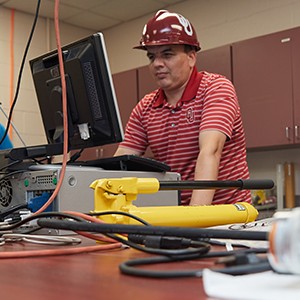NORMAN—A University of Oklahoma research team is developing smart lost circulation materials that use shape memory polymers activated by geothermal temperatures to prevent the loss of fluid in fractured rocks near the wellbore. These materials expand within the fractures to reduce non-drilling time and strengthen the wellbore in high-temperature drilling operations. The U.S. Department of Energy’s Geothermal Technologies Office funded the early-stage research with a $1.79 million grant. In addition, the project has more than $0.5 million cost share from various entities.
“The cost of drilling a geothermal well is prohibitive without new technologies to address the challenge of drilling the type of rock found in a geothermal well,” said Saeed Salehi, project principle investigator and professor of petroleum and geological engineering, Mewbourne College of Earth and Energy,. “The shape polymers under development for this project are novel expandable and programmable polymers that activate when drilling a high-temperature geothermal drilling operations.”
Salehi is working on the three-phase project with Ramadan Ahmed and Catalin Teodoriu, petroleum and geological engineering professors, Mewbourne College of Earth and Energy, and collaborators Dahi Taleghani, Pennsylvania State University, and Guoqiang Li, Louisiana State University. Professor Li is an expert in shape memory polymers, which help in the synthesis and testing of these materials in high temperature. Professor Dahi is a computational expert, which will help when the computational models are run.
In the first phase of the project, the team will develop a combination of lost circulation prevention methods and smart wellbore strengthening materials to address the problems in geothermal wells. The materials include novel expandable and programmable polymers, degradable thermoplastic composites and ceramics mixed with lost circulation materials that will be tested in a drilling and wellbore strengthening simulator.
In the second phase, the team will conduct flow loop tests on the materials using one of OU’s high-temperature flow loops modified for testing. And, in the last phase, computational models will be run to design the best combination of techniques, material sizes and concentration for application in the wells. For more information about this research, please contact Professor Salehi at salehi@ou.edu.



